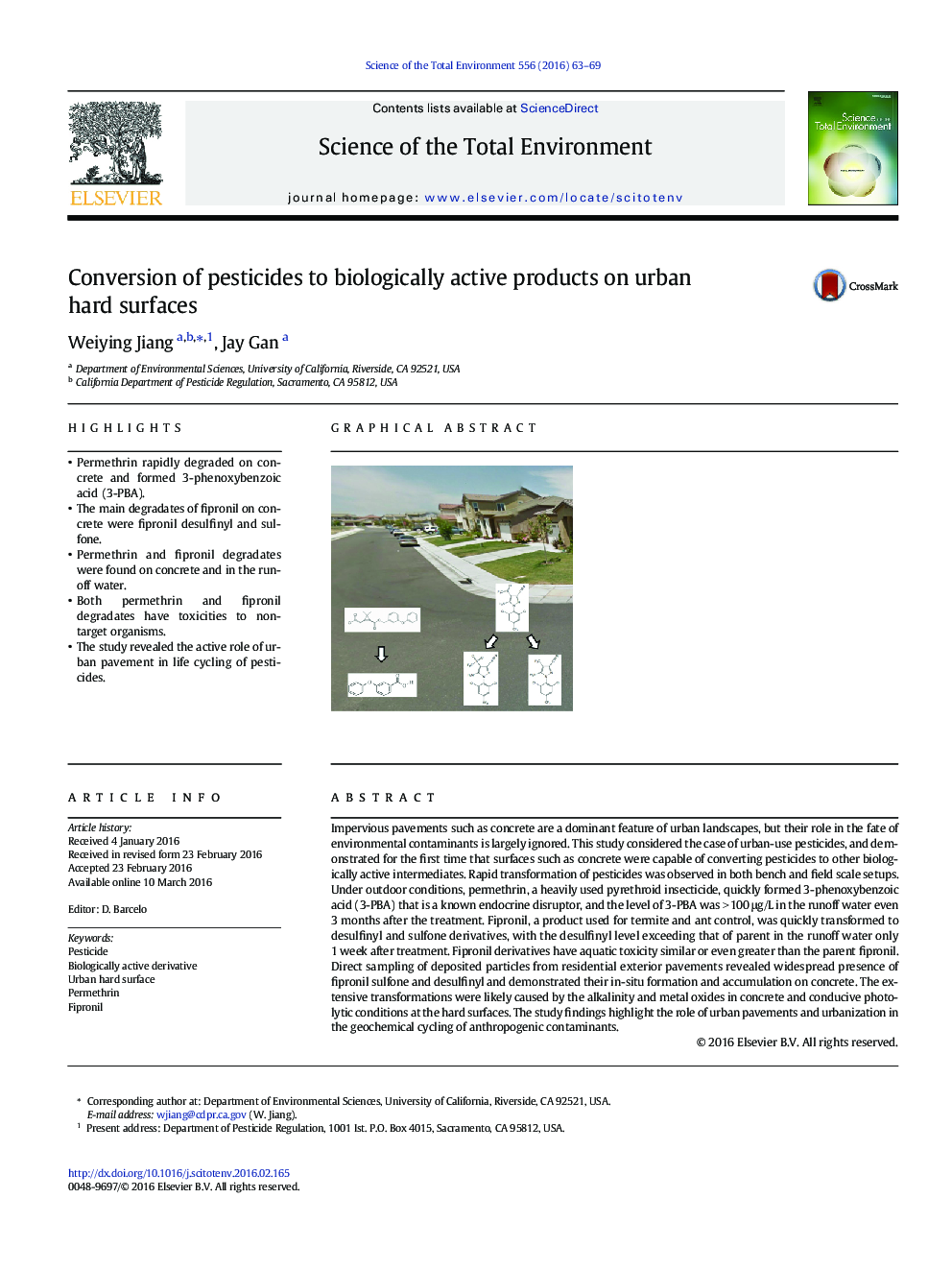| کد مقاله | کد نشریه | سال انتشار | مقاله انگلیسی | نسخه تمام متن |
|---|---|---|---|---|
| 6323020 | 1619730 | 2016 | 7 صفحه PDF | دانلود رایگان |
- Permethrin rapidly degraded on concrete and formed 3-phenoxybenzoic acid (3-PBA).
- The main degradates of fipronil on concrete were fipronil desulfinyl and sulfone.
- Permethrin and fipronil degradates were found on concrete and in the runoff water.
- Both permethrin and fipronil degradates have toxicities to non-target organisms.
- The study revealed the active role of urban pavement in life cycling of pesticides.
Impervious pavements such as concrete are a dominant feature of urban landscapes, but their role in the fate of environmental contaminants is largely ignored. This study considered the case of urban-use pesticides, and demonstrated for the first time that surfaces such as concrete were capable of converting pesticides to other biologically active intermediates. Rapid transformation of pesticides was observed in both bench and field scale setups. Under outdoor conditions, permethrin, a heavily used pyrethroid insecticide, quickly formed 3-phenoxybenzoic acid (3-PBA) that is a known endocrine disruptor, and the level of 3-PBA was > 100 μg/L in the runoff water even 3 months after the treatment. Fipronil, a product used for termite and ant control, was quickly transformed to desulfinyl and sulfone derivatives, with the desulfinyl level exceeding that of parent in the runoff water only 1 week after treatment. Fipronil derivatives have aquatic toxicity similar or even greater than the parent fipronil. Direct sampling of deposited particles from residential exterior pavements revealed widespread presence of fipronil sulfone and desulfinyl and demonstrated their in-situ formation and accumulation on concrete. The extensive transformations were likely caused by the alkalinity and metal oxides in concrete and conducive photolytic conditions at the hard surfaces. The study findings highlight the role of urban pavements and urbanization in the geochemical cycling of anthropogenic contaminants.
150
Journal: Science of The Total Environment - Volume 556, 15 June 2016, Pages 63-69
